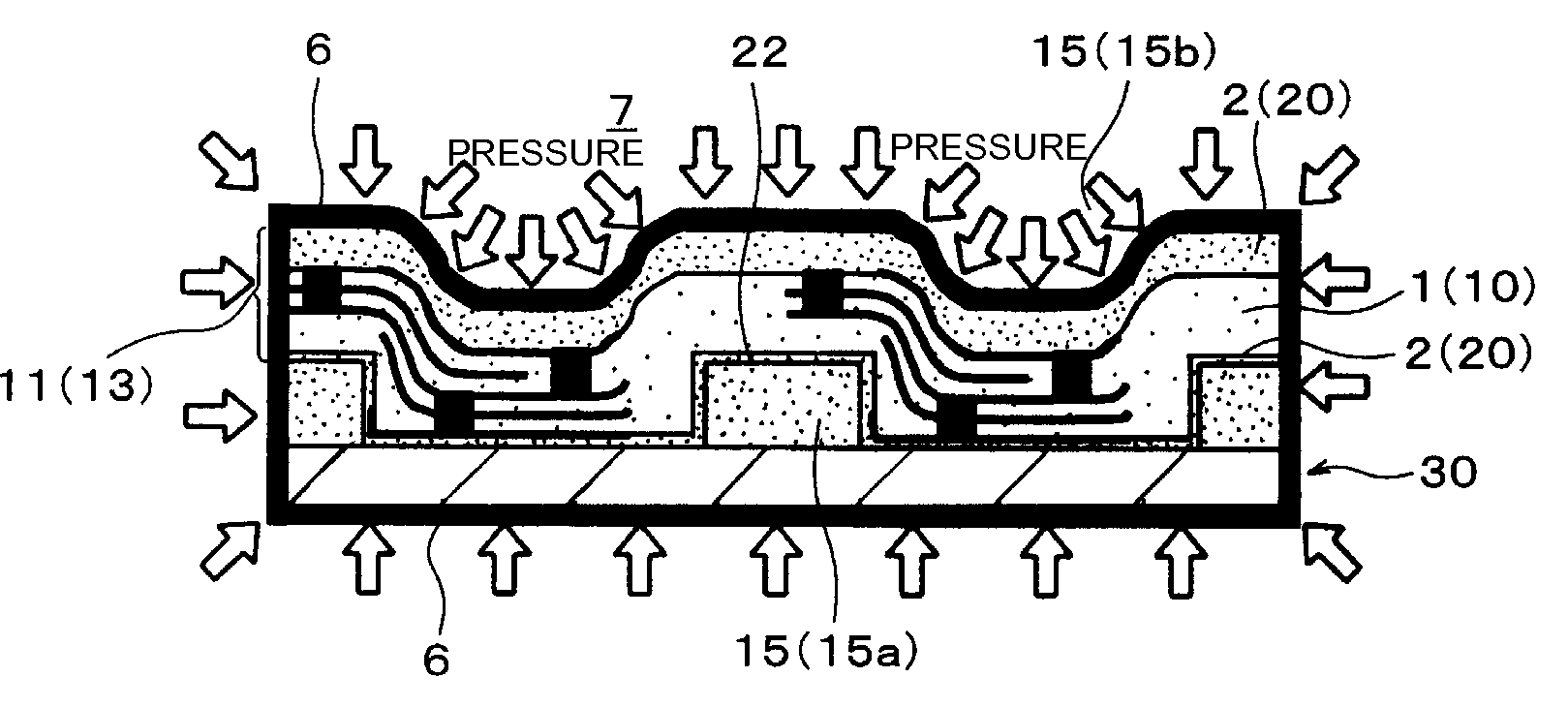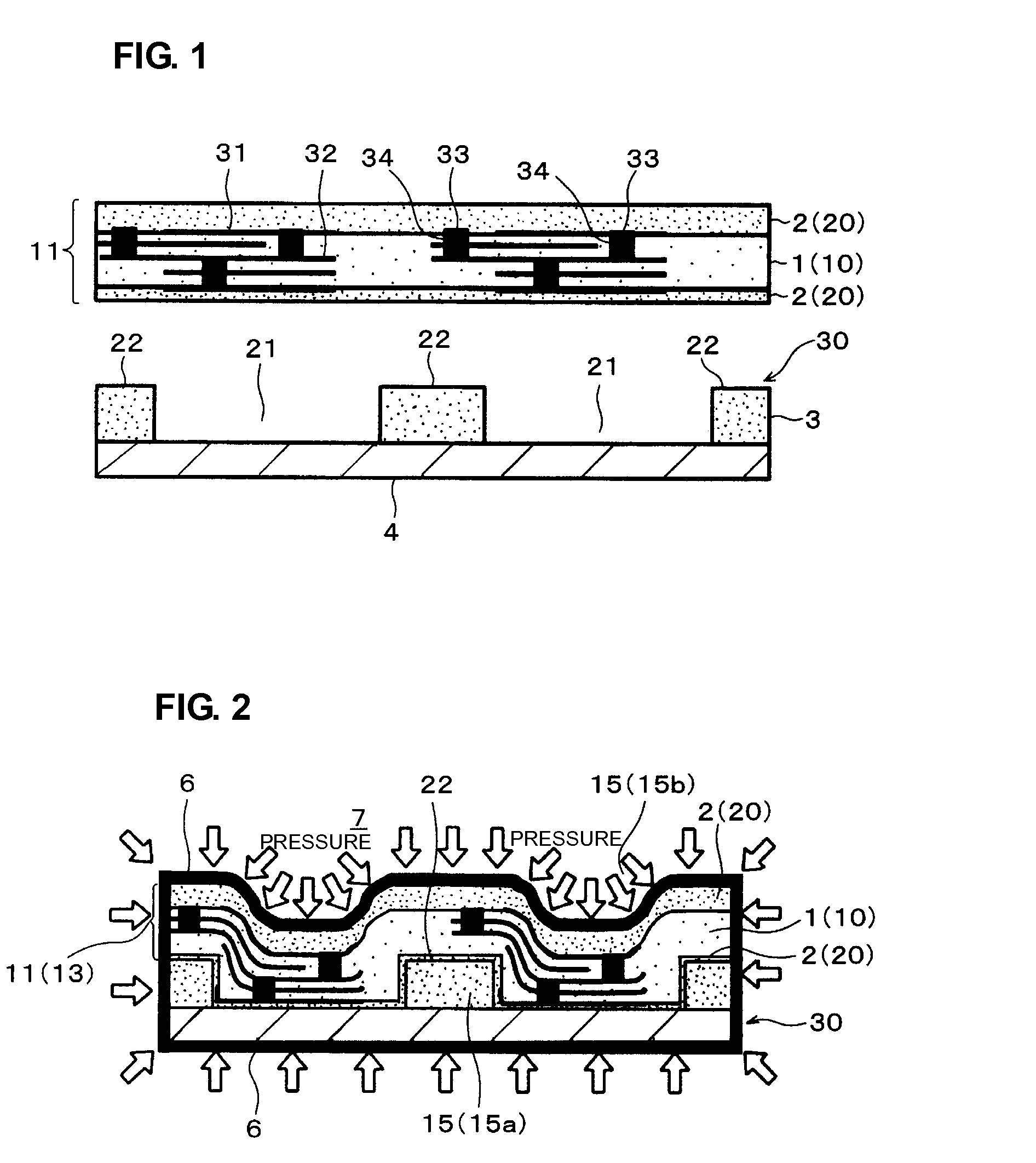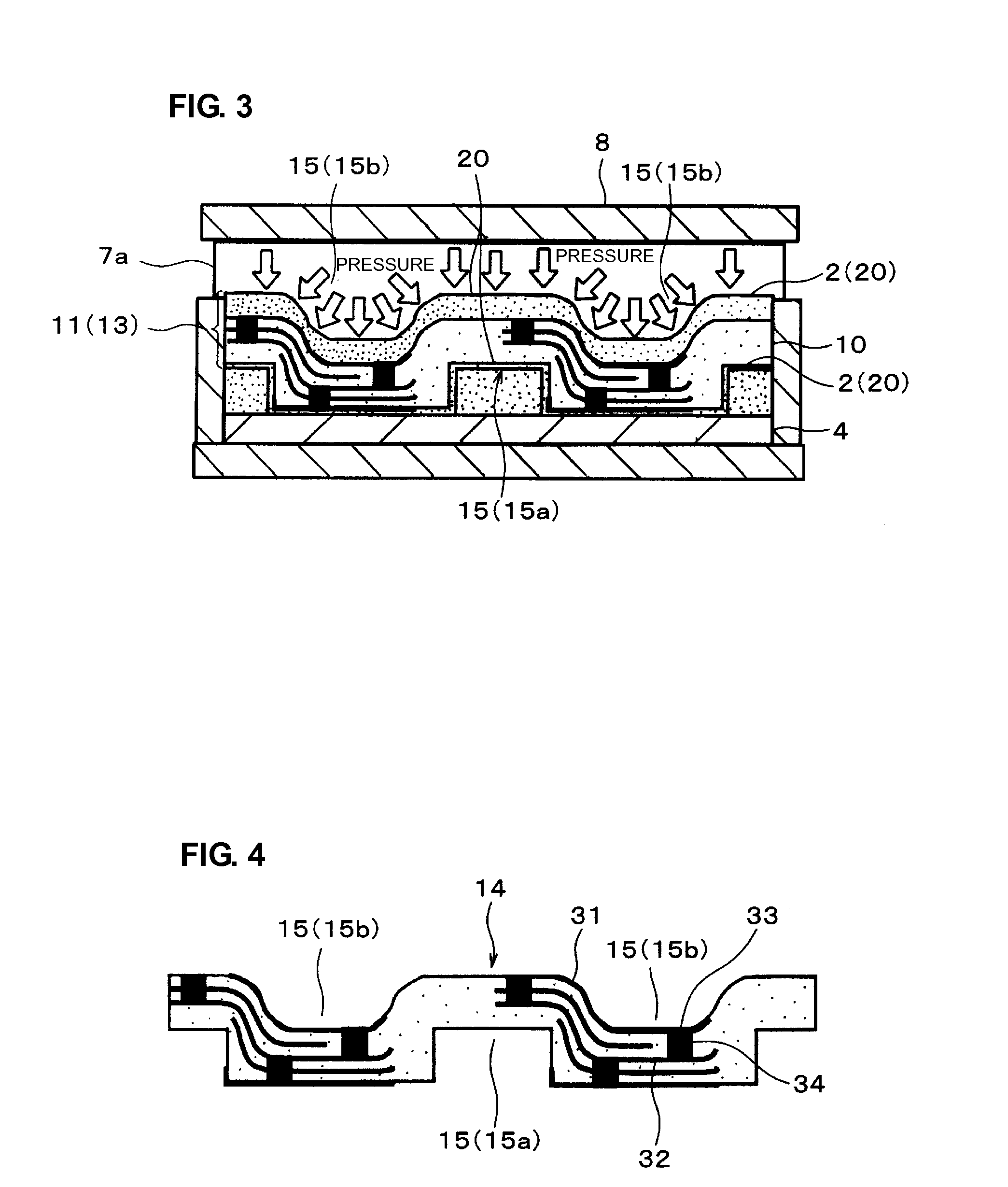Ceramic substrate production process and ceramic substrate produced using the process
a ceramic substrate and production process technology, applied in the field of ceramic substrate production process, can solve the problems of increased production cost and difficulty in maintaining the required degree of dimensional precision, and achieve the effects of reducing deformation angle, reducing production cost, and reducing production cos
- Summary
- Abstract
- Description
- Claims
- Application Information
AI Technical Summary
Benefits of technology
Problems solved by technology
Method used
Image
Examples
first preferred embodiment
[0085]A description will be given of a first preferred embodiment of a ceramic substrate production process of the present invention.
[0086](1) First, ceramic green sheets (hereinafter referred to as “substrate green sheets”) containing a ceramic material used for forming a ceramic substrate are prepared. An example of the procedure is as follows.
[0087]A mixture containing about 5% to about 20% by weight of B2O3 with respect to a sub-mixture composed of about 10% to about 55% percent by weight of CaO, about 45% to about 70% by weight of SiO2, about 0% to about 30% percent by weight of Al2O3 and about 0% to about 10% percent by weight of impurities is vitrified by melting at approximately 1,450° C. and is then quenched in water, followed by pulverization, so that a powdered CaO—SiO2—Al2O3-B2O3-based glass having an average grain size of about 3.0 μm to about 3.5 μm is formed.
[0088]In this first preferred embodiment, although CaO—SiO2—Al2O3-B2O3-based glass was preferably used, other t...
second preferred embodiment
[0130]FIG. 9 shows one step of a ceramic substrate production process of another preferred embodiment.
[0131]In FIG. 9, elements designated by the same reference numerals as those in FIGS. 1 and 2 indicate elements which are the same as or corresponding to those shown therein.
[0132]The second preferred embodiment preferably uses, as the pressing (deforming) die, a die 30 which is formed by directly forming recesses 21 and projections 22 having predetermined shapes on a plate 4 made of a material having an appropriate level of hardness (preferably resin in this preferred embodiment). Other features are similar to those of the first preferred embodiment.
[0133]The above-mentioned resin-made die is only illustrative, and a die formed by providing recesses and projections in a metal plate may also be used.
[0134]By using the die 30 as shown in FIG. 9, as in the case of the above-described first preferred embodiment, a ceramic substrate is produced through a step of forming a press-bonded m...
third preferred embodiment
[0144]FIG. 10 shows one step of a ceramic substrate production process in accordance with still another preferred embodiment of the present invention.
[0145]In FIG. 10, elements designated with the same reference numerals as those in FIGS. 1 and 2 indicate elements which are the same as or corresponding to those shown therein.
[0146]In the third preferred embodiment, as is the case of the die 30 of the foregoing first preferred embodiment, a die 30 is used which is formed by adhering to a plate 4 die-forming green sheets 3, which are obtained by punching out sheets which are the same as auxiliary layer (constraining layer) green sheets 2 into a predetermined shape. Onto this die 30, sequentially formed and press-bonded by a so-called sequential press-bonding laminating method are predetermined numbers of auxiliary layer (constraining layer) green sheets 2 that are unsinterable at the sintering temperature of a substrate green sheet, substrate green sheets 1 for forming a ceramic subst...
PUM
| Property | Measurement | Unit |
|---|---|---|
| grain size | aaaaa | aaaaa |
| temperature | aaaaa | aaaaa |
| temperature | aaaaa | aaaaa |
Abstract
Description
Claims
Application Information
 Login to View More
Login to View More - R&D
- Intellectual Property
- Life Sciences
- Materials
- Tech Scout
- Unparalleled Data Quality
- Higher Quality Content
- 60% Fewer Hallucinations
Browse by: Latest US Patents, China's latest patents, Technical Efficacy Thesaurus, Application Domain, Technology Topic, Popular Technical Reports.
© 2025 PatSnap. All rights reserved.Legal|Privacy policy|Modern Slavery Act Transparency Statement|Sitemap|About US| Contact US: help@patsnap.com



